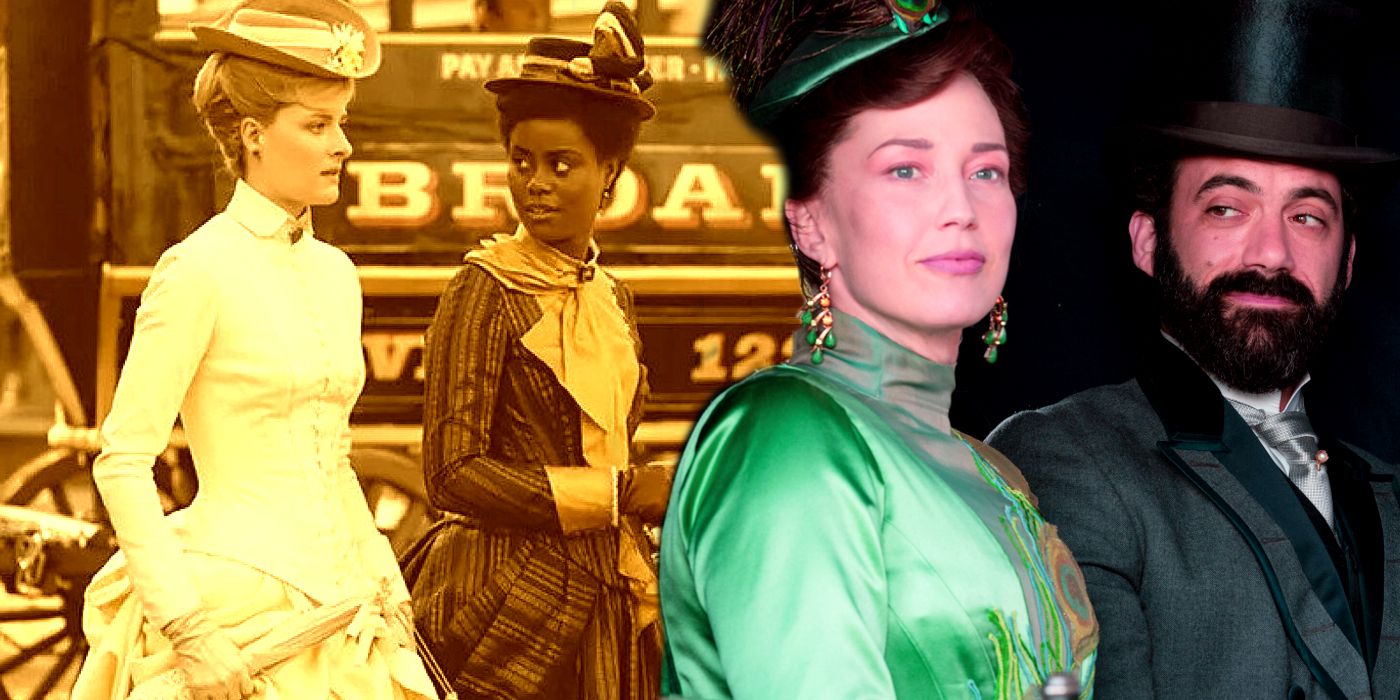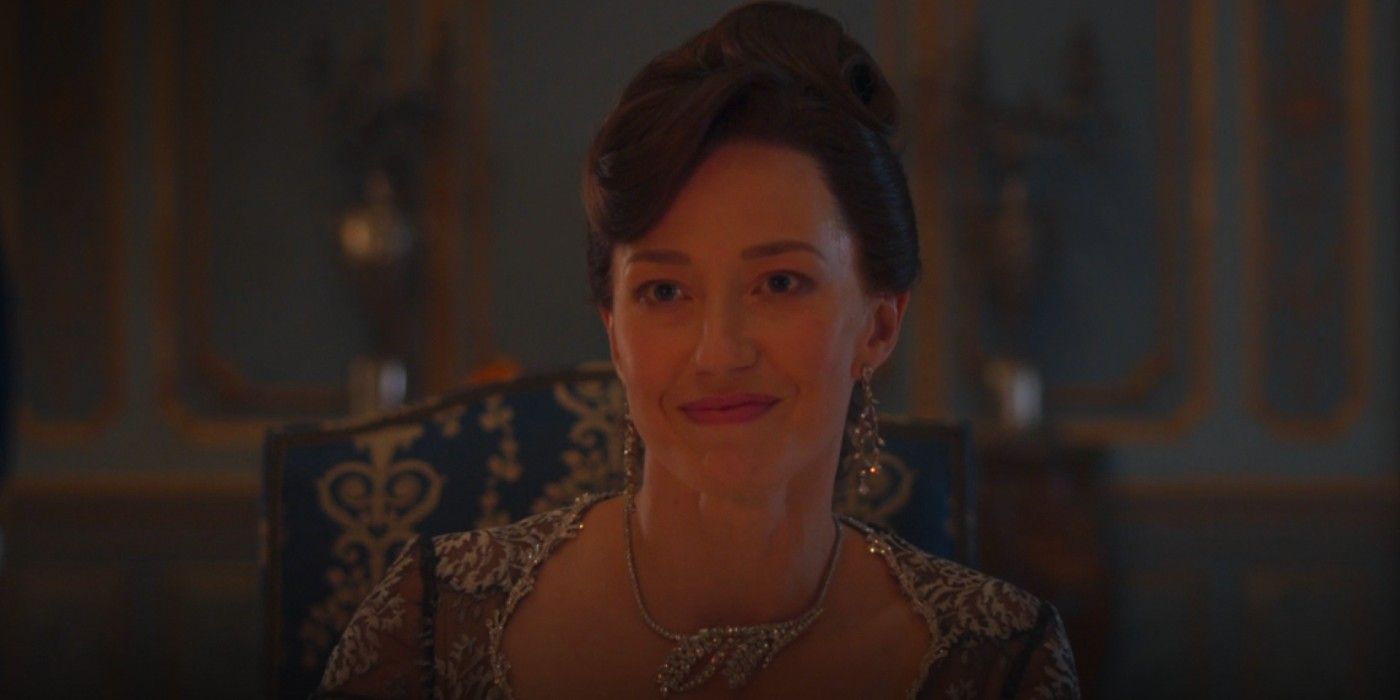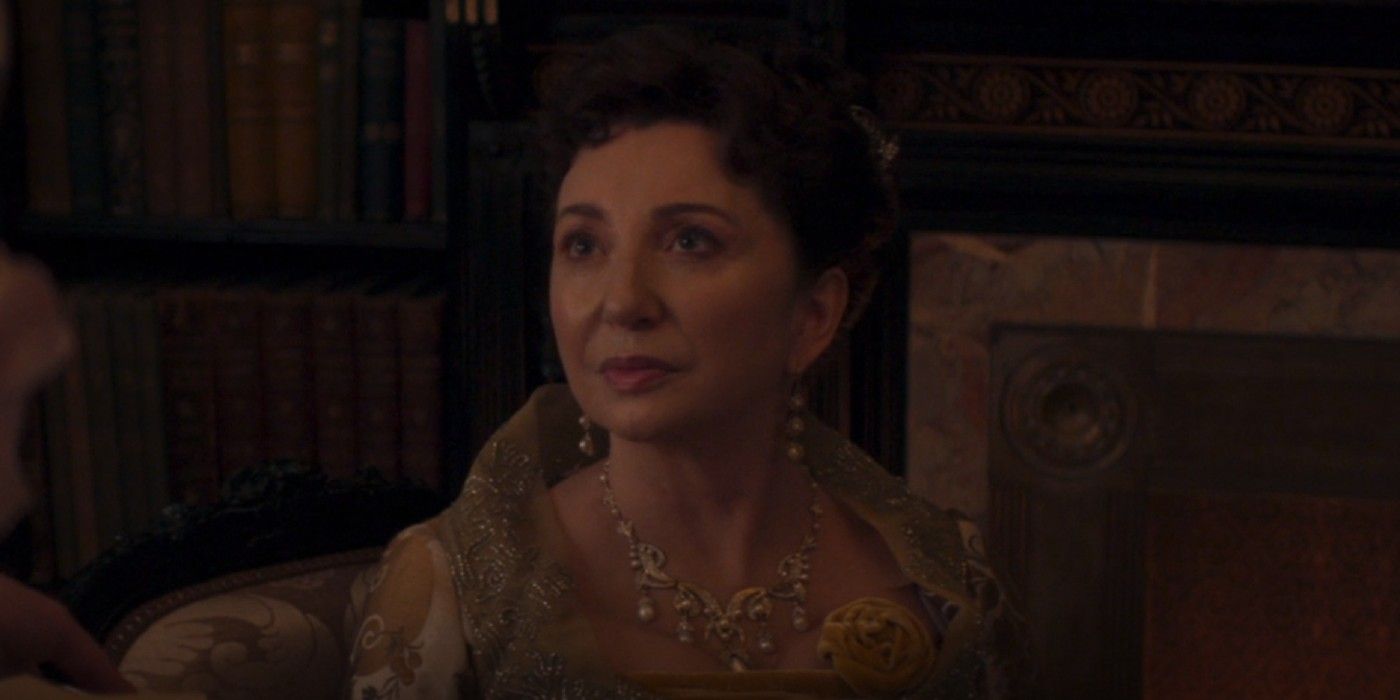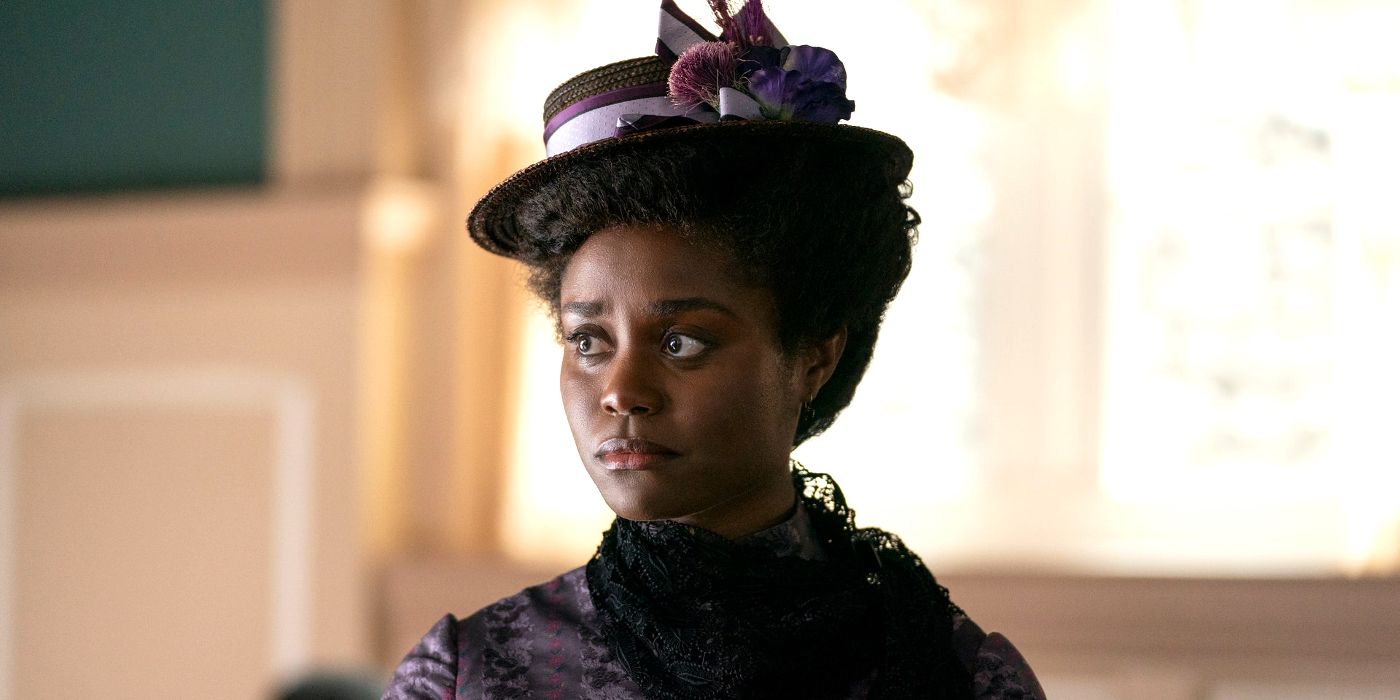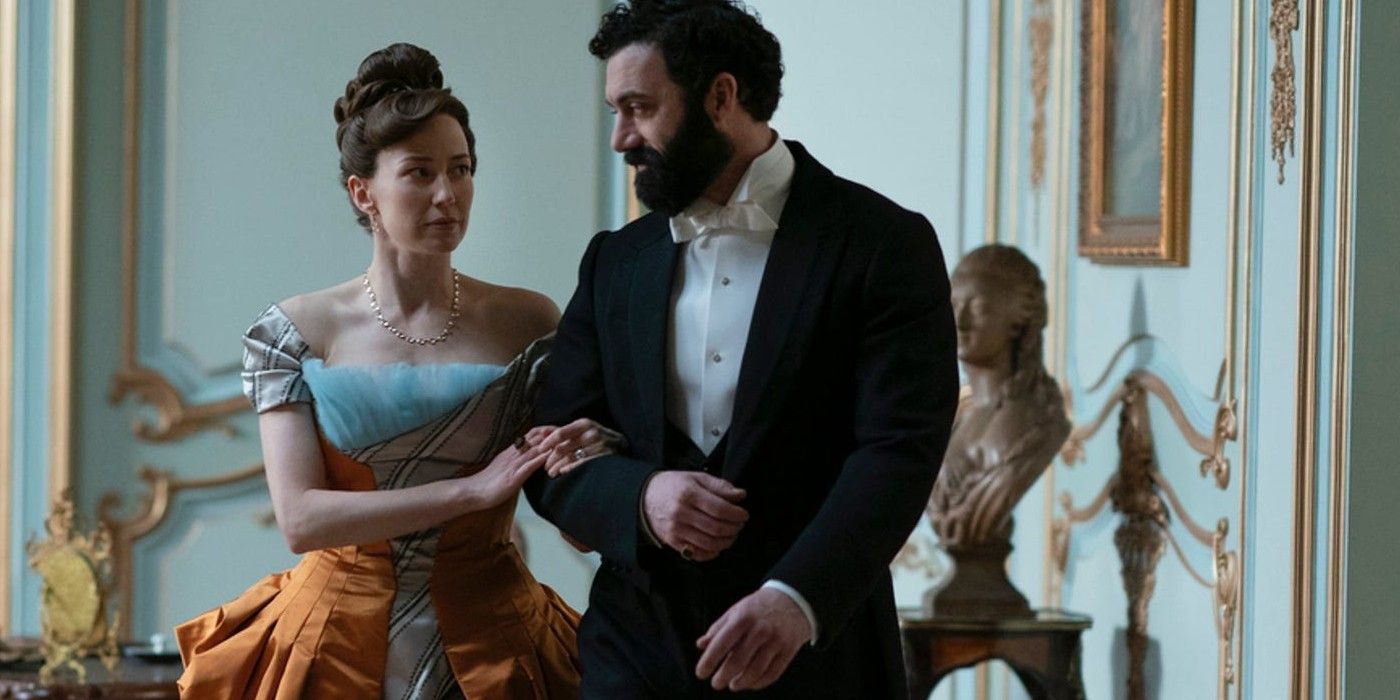Warning: SPOILERS for The Gilded Age Episode 1 - “Never The New”
Set in the United States during the real historical period by the same name, The Gilded Age has a lot of material to work with if it plans to stay true to 1880s New York City. Historical dramas have been known to exaggerate certain details for added effect, like in The Crown, season 4 when the portrayal of the royal family’s treatment of Princess Diana came under fire by viewers. But if Downton Abbey is any indication for Julian Fellowes’ commitment to realistic storytelling, then the events in The Gilded Age will likely be steeped in as much historical accuracy as possible.
The Gilded Age is set in 1882. In the wider social landscape, railroad tycoons are profiting wildly, robber barons are on the rise, and corruption is running rampant. The term “Gilded Age" itself comes from a phrase coined by Mark Twain and Charles Dudley Warner in their 1873 novel The Gilded Age: A Tale of Today. Some families acquired an impressive amount of wealth during this time, but pierce through that thin gilding and the plethora of social problems the wealthy took full advantage of, are exposed. Originally billed as the next Downton Abbey, The Gilded Age is another Fellowes period drama, already setting itself apart with a roster of new characters and fresh storyline that’s appropriate for its tumultuous setting.
At the center of The Gilded Age is the conflict between old money and new money. This idea is actually based in reality, with prominent socialites often gate-keeping into high society. While The Gilded Age is largely made up of fictional characters, the show does include a few real-life individuals as well that have been seamlessly integrated into the storyline. Though slavery has been abolished, racial tensions are still incredibly explosive at this time in the United States. The time period saw unprecedented growth in the economy and in immigration, which ultimately contributed to the widening gap in financial status. Here is how well The Gilded Age sticks to real history, as well as some cases where it deviates slightly from established fact.
Is The Gilded Age's New Money Conflict Based On Real History?
At the time of The Gilded Age, the United States was still relatively young compared to its European cousins. While families in England had royal titles, families in the United States used money to help them wield power. But simply having money often wasn’t enough to break into high society. One family that established themselves as being the gate-keepers of such a society were the real-life Astors. It was often customary for women to leave “calling cards” at the homes of the social elite, like the Astors, in order to be put on a “visiting list.” Ward McAllister, another real-life figure that makes an appearance on the show, helps Mrs. Astor with the gate-keeping. In The Gilded Age episode 1, Bertha Russell, played by Carrie Coon (Avengers: Infinity War), has already left a calling card for Mrs. Astor. There was often conflict between the “old money” gate-keepers and the “new money” that wanted into high society, like the Russells.
Which Real-Life Figures Appear In The Gilded Age?
A number of real-life figures make an appearance in The Gilded Age. The Astor family, once referred to as “The Landlords of New York,” is represented by Mrs. Astor and her daughter Carrie on the show. The Gilded Age will also include Ward McAllister (Nathan Lane), a close associate of Mrs. Astor’s. A man who concerns himself with other people’s business, McAllister is known for having coined the phrase, “the four hundred,” referring to the number of people in New York City that were worth associating with and the number that would fit into Mrs. Astor’s ballroom (though truthfully it could hold much less than that). The Crawley family from Downton Abbey even knew the Astors; Cora refers to J. J. Astor in Downton Abbey season 1, episode 1.
According to the cast list, a few other real-life figures will make an appearance as well, including Clara Barton (Linda Emond), known as the “Florence Nightingale of America” and the founder of the American Red Cross, and T. Thomas Fortune (Sullivan Jones), an activist, accomplished journalist, and creator of The New York Globe. A number of other historical figures have already made quick appearances in The Gilded Age episode 1 as well or are briefly mentioned, like a descendent of John Adams, or when Mrs. Russell lists all the families she left calling cards with, like the Vanderbilts.
How Well The Gilded Age Handles Contemporary Racial Issues
Peggy Scott, portrayed by Denée Benton, known for her role as Eliza Hamilton in Hamilton starting in 2018, is a Black writer on her way to New York City when she meets Marian Brook (Louisa Jacobson) early in The Gilded Age episode 1. After Peggy lends Marian some money to ride the train to New York City, the van Rhijn family takes in Peggy, employing her to work for Agnes van Rhijn (Christine Baranski). The van Rhijn’s staff members are split in their opinion of Peggy; while some don’t see why she shouldn’t be given proper employment, others think she and other Blacks are attempting to take over their jobs and that they’re not to be trusted. Their mixed feelings are very representative of the United States at this time; slavery may have been abolished, but that doesn’t mean that racial tensions weren’t still at a fever pitch.
Why The Gilded Age Was Such A Time Of Change
While Downton Abbey ultimately told the story of how prominent families start to lose their foothold, The Gilded Age focuses on the time when families were still clawing their way to the top. The late 1800s brought with it an unprecedented amount of economic growth. The First Transcontinental Railroad made the East and West accessible to each other within just a few days’ travel, and improvements in communication technologies made the country feel just a little bit smaller than before. Wages grew substantially between 1860 and 1890, faster than they were growing in Europe, and as such, many immigrants came to the United States. With industrialization on the rise, more workers were needed. However, with this came a massive wealth disparity. It is at this time that the United States begins to experience what it means for a select few to control the majority of wealth in the country.
While drama quickly unfolded in early Downton Abbey episodes, The Gilded Age is wasting no time in doing the same. However, thanks to the historical setting, the struggles these Americans are dealing with are fundamentally different from their English counterparts. Still, with the Gilded Age being such an exciting time for these characters, they have so much to gain, and just as much to lose.
The Gilded Age airs Mondays at 9pm on HBO and streams on HBO Max.

